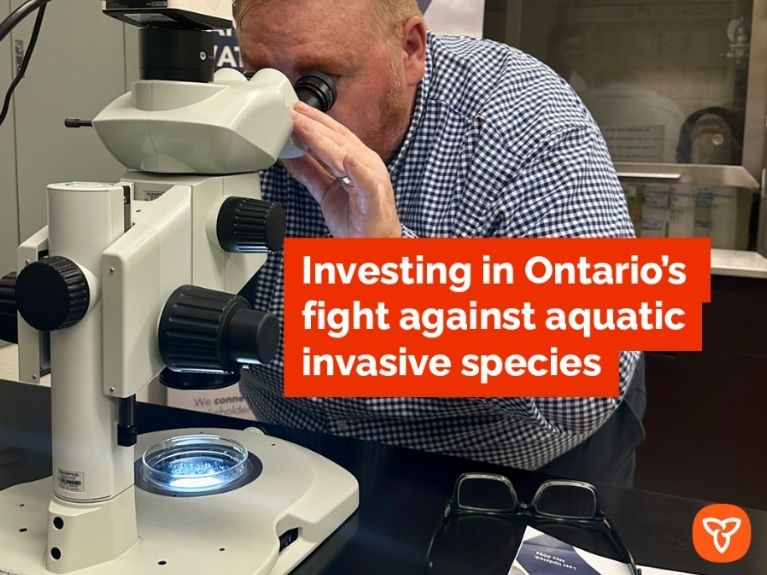The investment will be provided to the Invasive Species Centre to mobilize rapid response to stop the invasive species from spreading
Repost from the Ontario Ministry of Natural Resources | Posted on Oct. 17, 2024
The Ontario government is investing $500,000 to manage and prevent the spread of two aquatic invasive plant species recently detected in Leamington and Lake Simcoe.
Hydrilla was first detected in the Hillman Marsh Conservation Area located in Leamington, Ontario. Water soldier was also detected in Lake Simcoe waters for the first time.

“Our government is acting quickly to prevent the spread of invasive species in Leamington,” said Trevor Jones, MPP for Chatham-Kent—Leamington. “A quick response will prevent the spread of invasive species which degrades water quality and harms natural habitats.”
The funding will be provided to the Invasive Species Centre to mobilize a rapid response plan against these two high-risk aquatic invasive plant species.
“With the recent findings of hydrilla and water soldier in Ontario, it’s more important than ever for us to take immediate action against these aggressive aquatic invasive plants,” said Graydon Smith, Minister of Natural Resources. “This funding will support the Invasive Species Centre and local partners in quickly responding to these threats and protecting our natural environment and biodiversity in Ontario.”
This funding is in addition to the ministry’s $16 million investment to help municipalities, conservation authorities and Indigenous communities stop invasive species from establishing or spreading in the province.
“This new investment from the Ministry of Natural Resources will enable the Invasive Species Centre and our partners to support rapid response against two of Ontario’s most aggressive invasive aquatic plants,” said Colin Cassin, Invasive Species Centre Policy Manager. “Quick action and collaboration among partners are key to protecting Ontario’s lakes and rivers from the costly ecological and economic burdens these species present when left unchecked.”
The Ministry of Natural Resources will continue to work closely with the Invasive Species Centre and local partners to further assess the extent of these invasions and prevent, detect and respond to future threats. To support this work, Ontario is renewing the Ontario Invasive Species Strategic Plan to ensure we have the most robust plan possible in place.
QUICK FACTS
- Once established, hydrilla spreads rapidly and can stifle native species and clog water intake pipes, boat motors and impede other recreational activities like swimming and paddling. Hydrilla is a prohibited invasive species under Ontario’s Invasive Species Act 2015.
- Water soldier is a perennial aquatic plant that has long, thin, serrated leaves that grow in a circular pattern. They form dense mats that crowd out other vegetation and may alter water chemistry, impacting native aquatic species. Water soldier is a prohibited invasive species under Ontario’s Invasive Species Act 2015.
- The Invasive Species Act, 2015 currently lists 42 species (including hydrilla and water soldier), four groups, one family and two carriers. The Act provides legislative tools to prohibit and restrict certain invasive species, as well as carriers that facilitate the movement of invasive species.
- In 2019, the Invasive Species Centre estimated that the potential impacts of invasive species to agricultural, fisheries, forestry, health care, tourism and the recreation industry may be as high as $3.6 billion per year in Ontario.
ADDITIONAL RESOURCES
